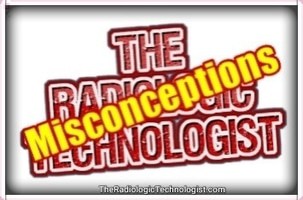4 Common Misconceptions About Radiologic Technologists. One common area of misunderstanding is the field of Radiologic Technology. Here we will debunk four prevalent misconceptions that exist about Radiologic Technologists.
Radiologic Technologists: Imaging Experts, Not Interpreters
Contrary to common belief, Radiologic Technologists cannot and should not attempt to interpret the images they produce. Doing so would not only breach our professional guidelines, risking our license, but it could also lead to a misdiagnosis or even worse outcomes. As Technologists, our role is to create high-quality diagnostic images, not to analyze them. This specific interpretation falls within the purview of a Radiologist.
The Distinction: Technologists versus Technicians
Another common mistake is confusing Technologists with Technicians. Despite the similarity in the names, these two roles are entirely different. Technicians are responsible for maintaining and fixing the imaging equipment. In contrast, Radiologic Technologists spend two years learning to produce diagnostic images through the skilled operation of this equipment.
More than Just ‘Button Pushers’
The notion of Radiologic Technologists being mere ‘button pushers’ is fundamentally misguided. This misconception is akin to saying pilots do nothing more than gaze through the cockpit windshield. We assure you, it takes more than pressing buttons to operate complex medical imaging equipment effectively.
Wearing Scrubs Does Not Make Us Doctors or Nurses
Just because we don hospital scrubs does not make us doctors or nurses. The color and fabric of our attire should not lead to assumptions about our profession. Remember, a badge, not a uniform, indicates our job title.
Radiologic Technologists: Skilled Practitioners of Medical Imaging
As of 2018, approximately 337,077 registered Radiologic Technologists in the United States, according to the American Society of Radiologic Technologists. These skilled practitioners are formally educated in anatomy, patient positioning, examination techniques, equipment protocols, radiation safety, and patient care.
After completing a comprehensive two-year program, these professionals must pass a national board exam to earn the title of Radiologic Technologist. One integral aspect of our profession is adherence to a Code of Ethics, which underscores the importance of understanding our role within the broader healthcare landscape.
The Crucial Triad: Technologist, Radiologist, and Physician
In the medical field, Radiologic Technologists, Radiologists, and attending Physicians form an essential triad. Each professional has a unique role to play, and none are trained or qualified to take on the responsibilities of the other.
For instance, while Radiologic Technologists can recognize certain pathologies, such as pneumonia on chest X-rays, we are not trained to understand the physiological cause or the pharmacological treatment for it. That’s why it’s crucial for each member of the healthcare team to execute the task they are trained for, to ensure the best possible patient care.
The Age-Old Confusion: Technologists vs. Technicians
Despite the ongoing confusion between the terms ‘technologist’ and ‘technician,’ they are two distinct roles within the healthcare landscape. Technicians fix equipment, while Technologists use that equipment to produce diagnostic images. However, it’s worth noting that even within the industry, Technicians are often called by different names, such as “biomedical engineers” or “clinical engineers.”
Button Pushing vs. Skilled Operation
Technological advances may have made some tasks simpler, but the need for skilled Technologists has not diminished.Technological advancements may mean that the machines can automate certain settings, but it is the expertise and professional judgement of the Technologist that ensures the capture of a high-quality, diagnostic image.
It’s crucial not to mistake automation for simplicity. A professional Radiologic Technologist can differentiate between a good image and a poor one, and adjust the controls accordingly.
Scrubs and Stereotypes
While scrubs are a common uniform in healthcare settings, they are not indicative of a specific role. Despite the stereotypical association of scrubs with doctors and nurses, they are worn by a range of healthcare professionals. A badge, rather than clothing, is the accurate identifier of a medical professional’s role.
To avoid misapprehensions, it’s important to ask professionals about their role rather than making assumptions based on appearance.
To summarize, Radiologic Technologists are key members of the healthcare team, with unique skills and responsibilities. It’s essential to understand their roles and not to confuse them with other healthcare professionals. By debunking these misconceptions, we hope to increase understanding and appreciation of the vital work performed by Radiologic Technologists.

